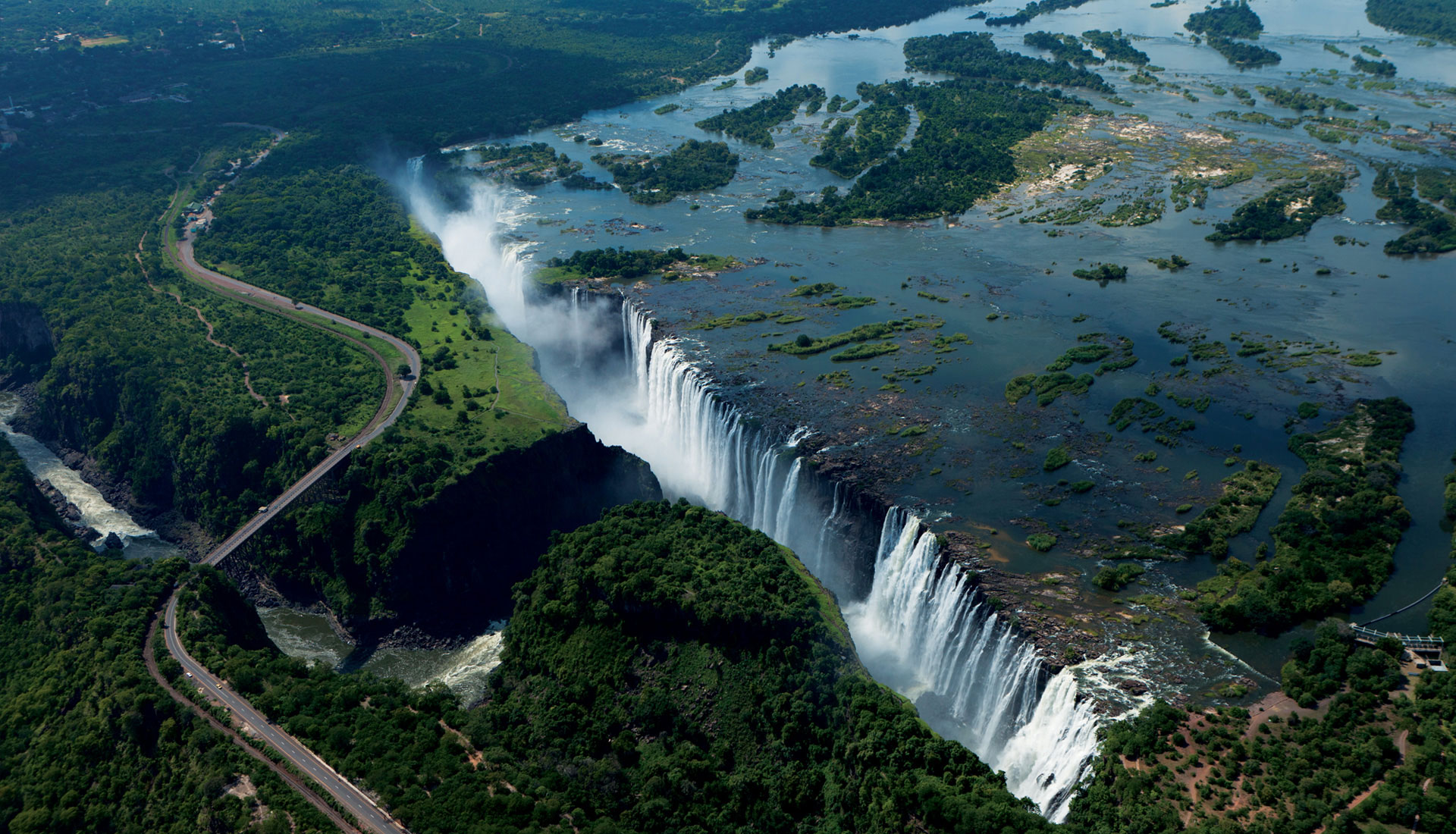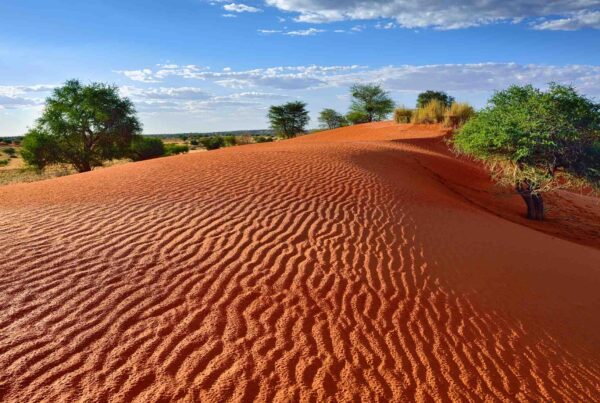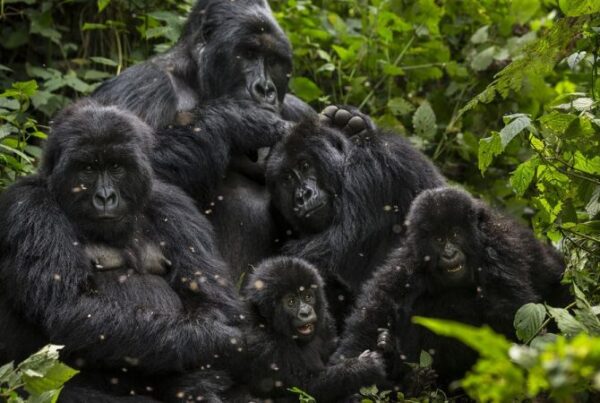Victoria Falls Zambia vs Zimbabwe, Which Side Is Better?
The Great Divide of the World’s Mightiest Waterfall
An Icon of Wonder: The Splendor That Unites and Divides
There are few natural spectacles on Earth as humbling, as deafening, and as hypnotically majestic as Victoria Falls. Revered by locals as Mosi-oa-Tunya, meaning “The Smoke That Thunders”, this towering cascade of water—where the Zambezi River plunges over a basalt cliff—has long been considered one of the Seven Natural Wonders of the World. It is not only a marvel of nature but also a powerful symbol of Africa’s awe-inspiring beauty.
Straddling the border between Zambia and Zimbabwe, Victoria Falls divides not just the river but also the perspectives of those who come to witness it. Each side offers distinct experiences, viewpoints, and atmospheres, sparking an ongoing and often passionate debate among travelers: Which side is better—Zambia or Zimbabwe? The answer is not as clear-cut as the spray-filled air that surrounds the falls. It is a tale of two countries, two vantage points, and two entirely different kinds of adventure, serenity, and sensory immersion.
Geographic Positioning: The Framework of the Falls
The Victoria Falls stretch over 1.7 kilometers in width and drop as much as 108 meters into the narrow chasm of the Batoka Gorge. Roughly 75% of this curtain of falling water lies along the Zimbabwean side, while the remaining 25% is viewed from Zambia. But mere geography cannot dictate the better experience. It is the combination of visibility, accessibility, weather influence, and proximity to activities that ultimately shape the visitor’s impression.
From Zimbabwe, visitors are granted a full frontal view of the falls, especially the Main Falls, Devil’s Cataract, and Horseshoe Falls. The panorama is more continuous and dramatic, with multiple viewpoints within the protected boundaries of Victoria Falls National Park. Zambia’s vantage, while shorter in breadth, offers an intimacy that few natural sites can match. During the dry season, when much of Zimbabwe’s side dries up, the Zambian trails descend into the gorge, allowing visitors to approach the rockface and see the geological heart of the waterfall.
The Zimbabwean Experience: Grandeur and Photographic Excellence
There is a sense of timeless majesty when the falls are viewed from Zimbabwe. The network of 16 marked viewpoints along the rainforest trail offers a near-uninterrupted visual engagement with the main curtain of water. Even in the dry season, the Zimbabwean side retains a flow of water through various channels, making it consistently photogenic year-round.
The ambiance here is defined by lush green foliage, birdsong mingled with the roar of the falls, and well-maintained walkways that guide visitors through an immersive botanical and geological encounter. For those seeking the perfect postcard shot, Zimbabwe often delivers it, with frame-worthy angles that capture the full scale and majesty of the spectacle. Furthermore, the infrastructure on this side is more developed, with a wide array of lodges, restaurants, and curated excursions that emphasize comfort and access.
Another critical advantage Zimbabwe holds is the iconic Victoria Falls Bridge, which not only offers dramatic views but also the thrill of bungee jumping, zip-lining, and bridge tours. It is from this bridge that many first see the chasm that divides the two countries—and where the mist lingers in the air like a sacred presence.
The Zambian Experience: Raw Proximity and Thrilling Access
On the Zambian side, Victoria Falls becomes a different kind of experience altogether—more tactile, more intimate, and certainly more adventurous. The paths are fewer and less manicured, but they bring travelers almost face-to-face with the falling water. Here, visitors are not simply observers—they become participants in the raw, thunderous energy of the falls.
During the wet season, the Knife-Edge Bridge becomes the ultimate theatre of immersion. Visitors often find themselves drenched by the powerful spray, walking through a cloud of mist with limited visibility but heightened emotion. It is not a place for cameras, but for connection—an elemental encounter with nature’s sheer force.
Perhaps the most thrilling experience unique to Zambia is the famed Devil’s Pool. During the dry months, a natural rock pool forms at the very lip of the falls, allowing daring visitors to swim just inches from a 100-meter drop. This is one of the most extraordinary photo opportunities in all of Africa, but it also embodies Zambia’s brand of safari-style adrenaline: uncurated, untamed, unforgettable.
The Zambian side also offers access to Livingstone Island, a small landmass at the edge of the precipice from where David Livingstone, the Scottish explorer, first set eyes upon the falls. This side of the river tells a story not just of nature, but of discovery, daring, and reverence.
Wildlife and Activities: A Contrast in Excursion Styles
While both countries provide access to game parks and safari excursions, Zimbabwe’s side leans toward organized tours, day trips, and cultural excursions, often complemented by polished lodges and spas. Visitors can embark on river cruises, visit the Victoria Falls Rainforest, or engage in culinary tours that reflect the warmth and depth of Zimbabwean culture.
Zambia, in contrast, provides a wilder edge. The proximity to the Mosi-oa-Tunya National Park allows for sightings of white rhinos and elephants just minutes from the falls. There’s also an authentic rural feel in Livingstone town, where local craft markets, museums, and community-run projects provide depth to the destination.
Helicopter flights over the falls are available on both sides, but the Zambian flights often cover a larger aerial loop, offering better views of the gorge system and river curves downstream.
The Seasonal Impact: Timing Is Everything
Visitors are often surprised at how dramatically the experience of Victoria Falls changes with the seasons. From February to May, the water volume is at its highest, and the falls become a thunderous white wall, visible even from kilometers away. Zimbabwe’s views during this season are unmatched in scale and spray.
However, from September to December, the Zambian side gains favor. As water levels drop, hidden rock formations, narrow chutes, and natural pools become accessible. The Zimbabwean side becomes drier and less dramatic, while Zambia transforms into a geological wonderland, where the ancient rocks reveal the scars and beauty of a million-year-old drama.
It has been observed that travelers who choose to visit both sides during a single trip—when the borders are open for day crossings—are rewarded with the full spectrum of Victoria Falls: the grandeur, the detail, the fury, and the calm.
Which Side Is Better? The Verdict Lies in Intention
Deciding which side of Victoria Falls is better is ultimately a reflection of what one seeks. Zimbabwe is for those drawn to panoramic views, consistent visibility, and refined accessibility. It offers the full-frame spectacle—the kind that leaves visitors silent in awe. Zambia caters to the adventurer, the experience-seeker, the traveler who wants to stand in the spray, feel the rock beneath their feet, and flirt with the edge of the world.
For travelers with time, the best approach is to embrace both—to walk the trails of Zimbabwe and feel the spray of Zambia, to photograph the grandeur and then swim at its edge. Only then does one begin to grasp the totality of Mosi-oa-Tunya, a place that does not belong to one nation or the other, but to the planet.
Plan the Ultimate Victoria Falls Safari with WildHorn Africa
To unlock the full magic of Victoria Falls, trust in the expertise of WildHorn Africa—a premier safari specialist that designs journeys rooted in authenticity, luxury, and unforgettable moments. Whether standing atop Devil’s Pool in Zambia or sipping wine from a cliffside lodge in Zimbabwe, your adventure will be seamlessly curated with care, knowledge, and passion.
Book your African adventure with WildHorn Africa, and let Victoria Falls show you not just which side is better—but why both sides are truly extraordinary.




 WildHorn Africa – Authentic and unforgettable tours across Africa, guided by local experts who know the land, wildlife, and culture best.
WildHorn Africa – Authentic and unforgettable tours across Africa, guided by local experts who know the land, wildlife, and culture best.


